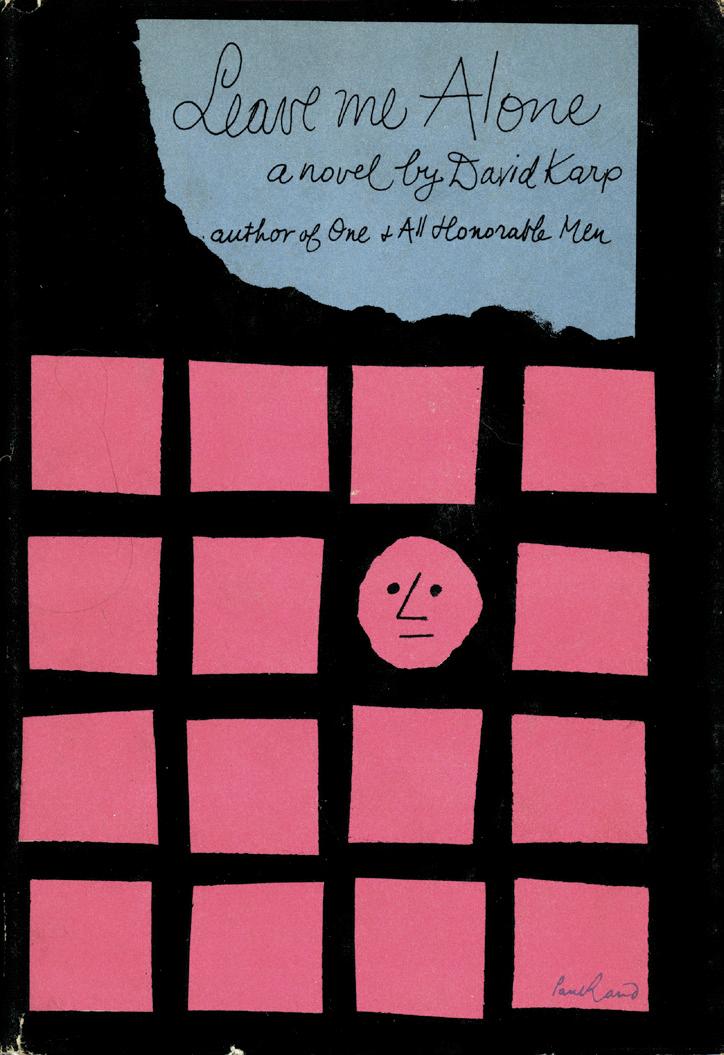Paul Rand
The Modern Pioneer

This booklet about Paul Rand was designed and produced by Nathan McDonald in the Fall of 2022 for DSGD 83 (Professor Ragouzeos) at San Jose State University. Front and back cover contains all original work by Nathan McDonald.
Sources for all graphics on interior pages are as follows: https://www.paulrand.design/work/
Sources for all research on the life and significance of Paul Rand: - https://www.paulrand.design/life/biography.html
- https://www.paulrand.design/life/interviews/1988-artograph.html
- https://www.paulrand.design/life/interviews/1988-id-magazine.html
- https://www.paulrand.design/life/books-articles/articles/ print/1993-print-magazine.html
- https://justcreative.com/the-influence-of-paul-rands-thoughts-on-design/
1
Paul Rand

was an American born on August 15th, 1914, Brownsville Brooklyn. He grew up in Brownville along with his brother, Philip Rand. Paul saw Graphic Design as another form of painting, which caught his interest. After graduating from Harren High School, Paul moved onto Parsons School of Design, as well as attending the Art Students’ League; both schools are located in the state of New York.
He describes creativity depends on how you feel in a given moment, and that there’s no boundaries stopping you from exercising said creativity. Eventually, in 1934, he began as an illustrator for the Metro Associated Services. A couple years later, he became the art director for Apparel Arts and Esquire Magazines, as well as the Weintraub Advertising Agency. It wouldn’t be until 1956 when Paul became the consultant for IBM; he remained as IBM’s consultant until his final years. On November 14th, 1996, Paul would pass away.
IBM 8-bar Version (1972)
This was a logo created for International Business Machines (IBM). It was designed to support IBM’s “THINK” motto, which according to IBM, was executed very well.

2
The Captive Mind (1955)
The cover for “The Captive Mind” represents the title of the book, and how noisy and confusing it can be inside of the head.

The Second Man (1956)
The cover for “The Second Man” represents the title of the book, and that there are two men. There’s nothing more to it.

United Parcel Service (1961)
Using a simplistic and bold font that’s surrounded by wrap helps convey that the company UPS is a shipping company.

3
ABC Logo (1962)
Paul was responsible for the creation of the ABC logo we see today. Although it is just a circle with lowercase letters inside, the simple design helped ABC stand out from competing broadcast companies.

Death Mask (1969)
The poster featuring a cartoonish skull demonstrates how combining a collection of shapes can then turn into a complex one.

Book Week (1958)
A poster featuring a kid reading lots of books. It’s a simple and effective design for a poster that can beplaced in a library.

4
Leave Me Alone (1957)
The cover for “Leave Me Alone” demonstrates a sense of isolation through the only piece of paper with a blank, expressionless face.
Kaiser-Frazer (1949)
The combination of bright shapes and colors helps catch the attention of people driving by Kaiser-Frazer.

H.L. Mencken (1958)
A poster featuring journalist HL Mencken. Its true purpose is unclear, but it’s highly implied that Paul Rand was being playful and decided to make this.


5
Impact
Paul Rand was inspired by the works of Roger Fry, Alfred Whitehead, and John Dewey; as well as commercial art that came from the UK and Germany. He hascreated numerous logos for various companies and organiazations, such as IBM, ABC Network, and UPS. They’ve become very impactful because they demonstrated how one can make a simplistic design and make it appealing for everyone to see. He was able to open the eyes of many Americans and show them a new spin on visual communication. This revelation inspired people like Tom Geisner, who created the logos for the company Chase and even PBS.

6
Book designed by Nathan McDonald December 2022 for DSGD 83 at SJSU













